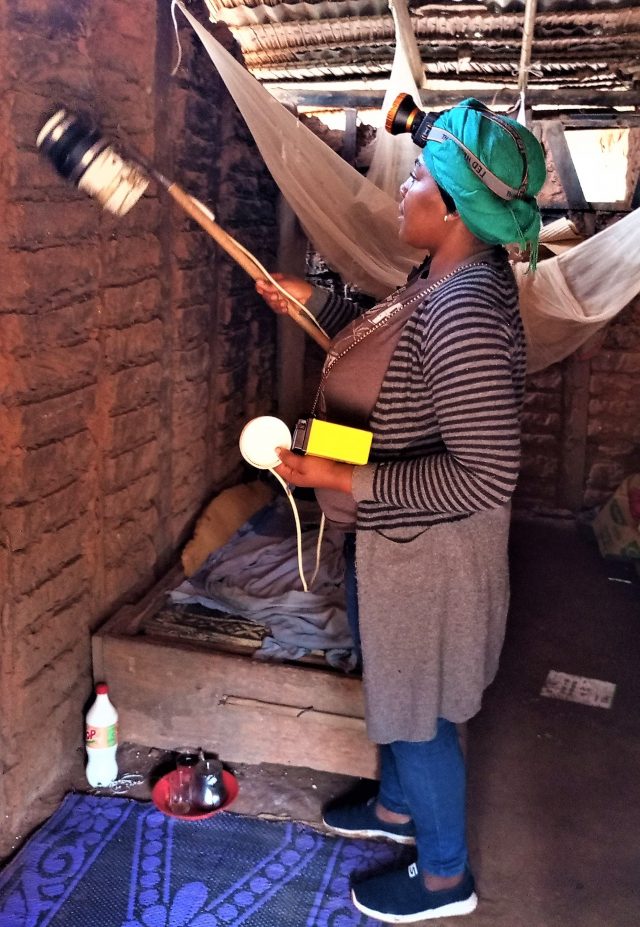Nowadays, the development of new alternative control methods to prevent malaria transmission is urgently needed. The endosymbiont Asaia has emerged as a promising candidate for paratransgenic control of malaria.

Claudine Maffo collecting mosquitoes on the field
That’s why this study by Grace Maffo Tatsinkou aimed at investigating the prevalence and maternal transmission of Asaia in the natural population of Anopheles mosquitoes in Cameroon. The Anopheles mosquitoes were collected from eight different eco-geographical localities across Cameroon: Mibellon, Gounougou, Bankeng Elende, Elon, Obout, Mangoum and Tibati. Then, Polymerase Chain Reaction (PCR) was performed on the Asaia-specific 16S ribosomal Ribonucleic Acid (RNA) gene, and samples positive by PCR for Asaia were confirmed by Sanger sequencing and phylogenetic analysis. The vertical transmission of Asaia was also investigated by screening F1 mosquitoes, progeny of F0 Asaia-positive females.
A total of 895 mosquitoes has been collected and screened. We found 43% (384) Asaia infection prevalence in four mosquito species (An. coluzzii, An. arabiensis, An. funestus and An. gambiae). This prevalence was variable according to the localities and mosquitoes species. This could be explained by the heterogeneous routes in transmission among which feeding on flowers, breeding site, and horizontal and vertical dissemination events. For example, the highest infection rates of Asaia were observed at Elon, Elende and Obout, which are all located in the forest region. This highest infection rate could be attributed to the abundance of plants and breeding sites as reported in a previous study done by Bassene et al., in Senegal, who presented the role of plants in the transmission of Asaia sp. Phylogenetic analysis revealed that, Asaia from Cameroon clustered together with the strains of Asaia isolated from other parts of the world (Senegal, Irian and Madagascar etc). Thus, the presence of natural Asaia in different parts of the world could be harnessed to develop a paratransgenetic control method against malaria vectors. In addition, seven nucleotide sequence variants were found with low genetic diversity (π = 0.00241) and nucleotide sequence variant diversity (Hd = 0.481), indicating the presence of rare mutations in natural Asaia populations genome, which could suggest a recent Asaia population expansion. Finally, Asaia was vertically transmitted with high frequency (range from 42.5 to 100%).This study provides preliminary evidence of the circulation of Asaia in malaria vectors in Cameroon. The predominance of a nucleotide sequence variant in all the mosquito species suggests the feasibility of a paratransgenic control approach via the bioengineering of Asaia in malaria vectors. These data provide important baseline information towards developing potential strategies by exploring the possibility of utilizing them for malaria control.






